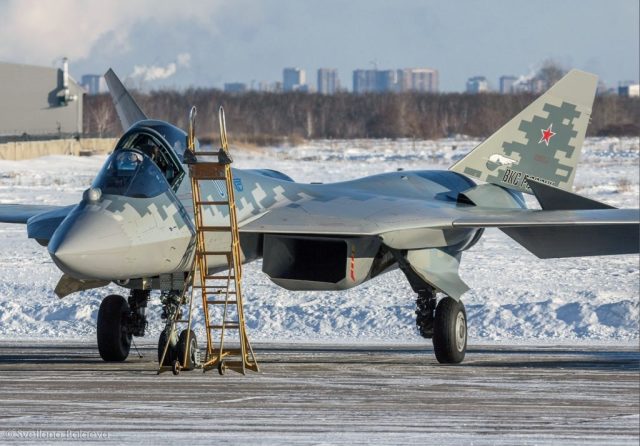Russia’s Fifth-Gen Fighter Aircraft, Su-57 Transforms into “Mini Drone Carrier”
The mini drones, deployed by Russia's fifth-generation Su-57 fighter jets, are responsible for carrying out offensive operations, reconnaissance, and electronic warfare against enemy offensive assets.
(DEFENCE SECURITY ASIA) — In addition to its armament of guided bombs and ammunition, the Su-57 “Felon,” a fifth-generation Russian fighter aircraft, is reportedly undergoing development to deploy a diverse array of multi-purpose mini drones.
These multi-purpose mini drones will be deployed by the Su-57 fighter aircraft while in the air to execute programmed missions against adversaries.
The mini drones, deployed by the Su-57 fighter jets, are responsible for carrying out offensive operations, reconnaissance, and electronic warfare against enemy offensive assets.
The deployment of these mini drones by the Su-57 fighter aircraft aims to ensure the successful penetration of enemy air defense systems and their destruction with the assistance of the mini drones, ultimately leading to defeat for the enemy, as reported by the Russian news agency RIA Novosti in a recent update.
In recent years, drone technology, whether for military or civilian purposes, has rapidly advanced.

Senior defense industry officials in Russia have stated that manned fighter aircraft are gradually being replaced by drones.
These mini drones operate autonomously and can collaborate with other drones or fighter aircraft.
The Russian defense industry is actively developing drone systems capable of exchanging information and cooperating with other fighter aircraft groups, such as the Su-75 “Checkmate” and the Su-57.
This collaboration opens up opportunities for the emergence of tactics involving “drone swarms” – a concept where drones collaborate with each other to achieve various specific goals.
As the United States seeks to enhance the capabilities of its fifth-generation fighter aircraft, the F-35 Block 4, with various upgrades, Russia is also taking similar steps to upgrade the Su-57 with several sixth-generation fighter aircraft capabilities.
According to the Russian news agency TASS, the Su-57 will be upgraded to incorporate Artificial Intelligence (AI) capabilities.

Test pilot at Sukhoi Design Bureau, Rafael Suleimanov, reportedly stated that the use of AI on the fighter aircraft would enable the Su-57 to “do anything in the air.”
These upgraded Su-57 aircraft are also designed to carry various new weapon systems being developed by Russia, in addition to internal equipment and weapon systems.
Apart from the internal equipment and weapon systems, the upgraded Su-57 is expected to be equipped with a new engine known as “Izdeliye 30,” allowing the aircraft to fly at supersonic speeds without using an afterburner.
Currently, the Su-57 aircraft in operation use a temporary engine, the NPO Saturn Product 117, which is a variant of the AL-41F-1S engine developed for the Su-35 aircraft.
Analysts suggest that the use of the Izdeliye 30 engine will enhance the thrust of the Su-57 aircraft, improve fuel efficiency, reduce the overall weight of the fifth-generation aircraft, and simplify maintenance tasks.

Unlike fourth-generation aircraft, the Su-57 can maintain supersonic speeds throughout its missions, even when engaging with adversaries.
According to officials from the Sukhoi Design Bureau, “Fourth-generation aircraft spend most of their time at subsonic speeds and only reach supersonic speeds during combat missions, but the Su-57 is designed to fly at supersonic speeds almost all the time.” — DSA

DEFENCE SECURITY ASIA APPS
To advertise contact admin: haikalhamas73@gmail.com


Comments are closed.